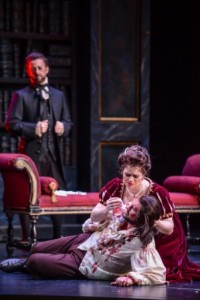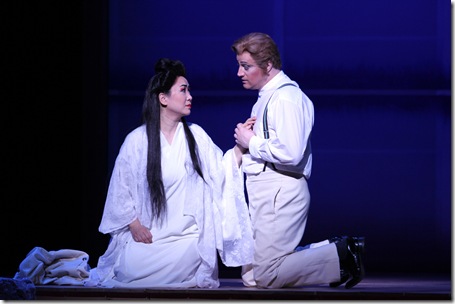Tosca: Opera Lyra continues in the right direction

One of my all-time favorite operas, Puccini’s Tosca, speaks to us, not only through some of Puccini’s most beautiful music and memorable arias, but also through the tale of tyranny and unrestrained lust in a turbulent time, which is so familiar to all generations. Based on Victorien Sardou’s dramatic play La Tosca, this timeless piece of art deals with the lowest and the highest aspects of human nature. Time-wise it takes less than two days – according to Sardou just between the afternoon of June17th and early morning of 18 June 1800. When the Kingdom of Naples’s control of Rome is threatened by Napoleon’s invasion of Italy, love, courage and political repression intertwine in 24 hours of harsh reality.
The historical background coupled with the fact that the action is set in three still existing Roman locales – act one is set in the Church of Sant’Andrea delle Valle, act two in the Palazzo Farnese, and act three in the Castel Sant’Angelo – bring this opera closer to reality than any other operatic work. Of course, the very contemporary construction of the story helps, as well. It has a movie-like flow: romantic introduction (Tosca’s entrance in the church in the moment when Mario Cavaradossi is helping a runaway political prisoner); thriller-like development (Tosca spots a knife and kills Baron Scarpia); and a tragic culmination (the betrayed promise of false execution and free passage out of Rome, which brings the death of two lovers). …
